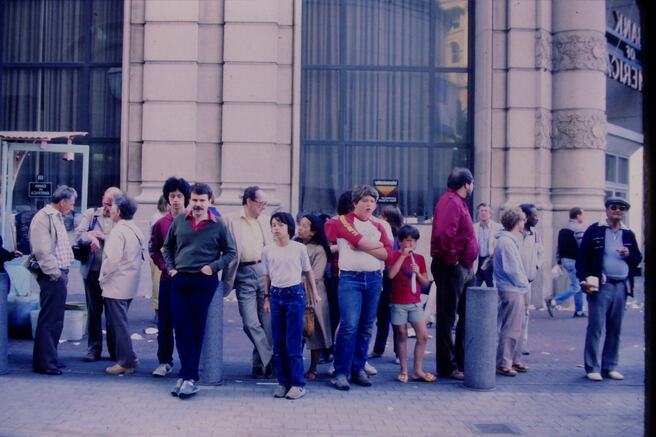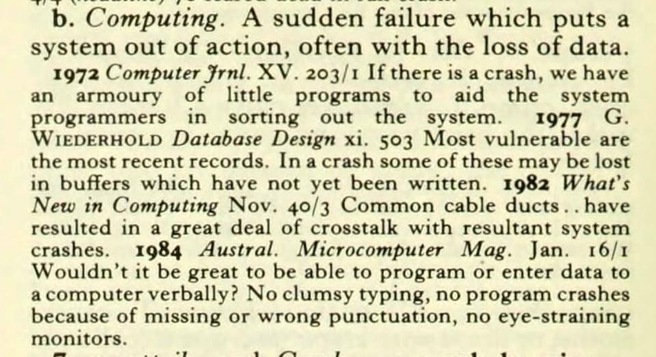Tribute by Gio’s former students
Gio was a great scholar, educator, and mentor. His influence on the database field is immense. As a pioneer in the database field, he wrote the influential 1977 textbook Database Design, one of the first in the field and adopted around the world. In his DARPA-supported Knowledge-Base Management Systems project in the early 1980s, Gio pioneered the concept of integrating databases and AI, a topic that is now enjoying a revival. Beginning in the 1970s, Gio also pursued the application of databases to medical informatics, another area just now entering the mainstream. In 1992, Gio introduced the notion of mediators (IEEE Computer) as a way of intelligently integrating information from large-scale heterogeneous sources such as databases, file systems, and repositories, a seminal idea for the nascent field of information integration. Gio continued to innovate after retirement from Stanford, most notably in establishing an approach for valuing software and the intellectual property of multinational firms.
Gio advised 36 PhD students at Stanford. Today, Gio’s academic descendants can be found in companies and universities all over the world, including early students Hector Garcia-Molina (the late Stanford professor), David Shaw (DE Shaw founder), Ramez Elmasri (the late textbook author and UT Arlington professor), Kyu-Young Whang (KAIST professor and Naver founder’s advisor), and Marianne Winslett (UIUC professor). Gio’s many subsequent students continue to lead the database field today.
An influential mentor, Gio always emphasized the practical aspects of research, encouraging people to develop both theoretical and engineering approaches to solve real-world problems. This outlook stemmed from his many years of experience in computing practice before he joined the Stanford University faculty.
Gio’s service to the professional community includes serving as the third Editor-in-Chief of ACM Transactions on Databases during 1985-1995, during which time he significantly contributed to making the new journal a top one in the field. Together with five colleagues, Gio co-founded the IEEE International Conference on Data Engineering in 1984. Perhaps the first venue to use the term data engineering, the conference was unique in focusing on engineering aspects of database research; today it stands as one of the three top-tier conferences in database research. Gio also served as the conference’s program committee chair, co-chair, and general chair in its early years. During 1991-1994, Gio served as the program manager for DARPA’s Knowledge-based Systems program, which collaborated with NSF to fund innovative new research related to information integration and digital libraries — including the project that led to the creation of Google.
In recognition of his many contributions, Gio received the IEEE Technical Community on Data Engineering’s Service Award in 2016. He was also a Fellow of the ACM, the IEEE, and the American College of Medical Informatics.
The many accomplishments and contributions listed above do not capture the full extent of Gio’s impact and influence on our community, nor his diligence and persistence. As Gio’s former students, we dearly miss him for his warm heart towards his students, colleagues, and friends, and above all, his love and kindness for everyone he knew. We are deeply saddened by Gio’s unexpected death and send our sincerest condolences to his surviving family and friends.
Kyu-Young Whang, Distinguished Professor Emeritus, KAIST and Marianne Winslett, Research Professor Emerita, University of Illinois at Urbana-Champaign, together with Gio’s other former students
Gio advised 36 PhD students at Stanford. Today, Gio’s academic descendants can be found in companies and universities all over the world, including early students Hector Garcia-Molina (the late Stanford professor), David Shaw (DE Shaw founder), Ramez Elmasri (the late textbook author and UT Arlington professor), Kyu-Young Whang (KAIST professor and Naver founder’s advisor), and Marianne Winslett (UIUC professor). Gio’s many subsequent students continue to lead the database field today.
An influential mentor, Gio always emphasized the practical aspects of research, encouraging people to develop both theoretical and engineering approaches to solve real-world problems. This outlook stemmed from his many years of experience in computing practice before he joined the Stanford University faculty.
Gio’s service to the professional community includes serving as the third Editor-in-Chief of ACM Transactions on Databases during 1985-1995, during which time he significantly contributed to making the new journal a top one in the field. Together with five colleagues, Gio co-founded the IEEE International Conference on Data Engineering in 1984. Perhaps the first venue to use the term data engineering, the conference was unique in focusing on engineering aspects of database research; today it stands as one of the three top-tier conferences in database research. Gio also served as the conference’s program committee chair, co-chair, and general chair in its early years. During 1991-1994, Gio served as the program manager for DARPA’s Knowledge-based Systems program, which collaborated with NSF to fund innovative new research related to information integration and digital libraries — including the project that led to the creation of Google.
In recognition of his many contributions, Gio received the IEEE Technical Community on Data Engineering’s Service Award in 2016. He was also a Fellow of the ACM, the IEEE, and the American College of Medical Informatics.
The many accomplishments and contributions listed above do not capture the full extent of Gio’s impact and influence on our community, nor his diligence and persistence. As Gio’s former students, we dearly miss him for his warm heart towards his students, colleagues, and friends, and above all, his love and kindness for everyone he knew. We are deeply saddened by Gio’s unexpected death and send our sincerest condolences to his surviving family and friends.
Kyu-Young Whang, Distinguished Professor Emeritus, KAIST and Marianne Winslett, Research Professor Emerita, University of Illinois at Urbana-Champaign, together with Gio’s other former students



